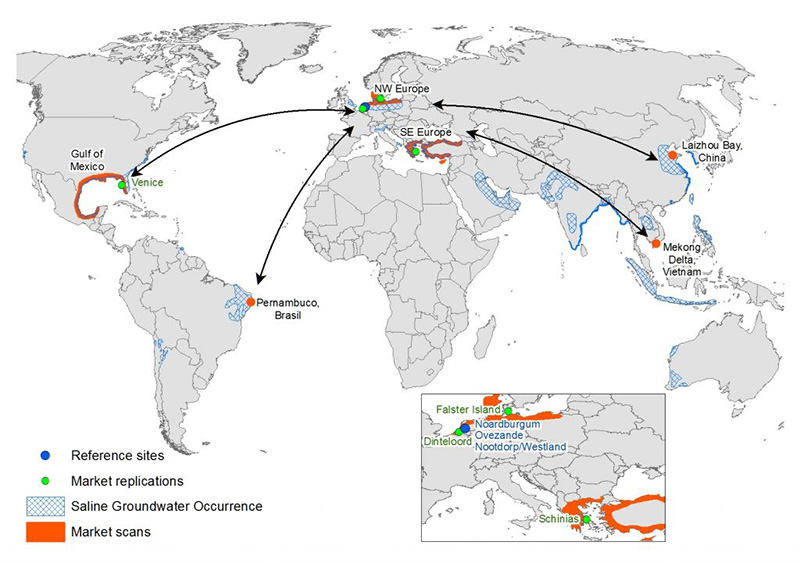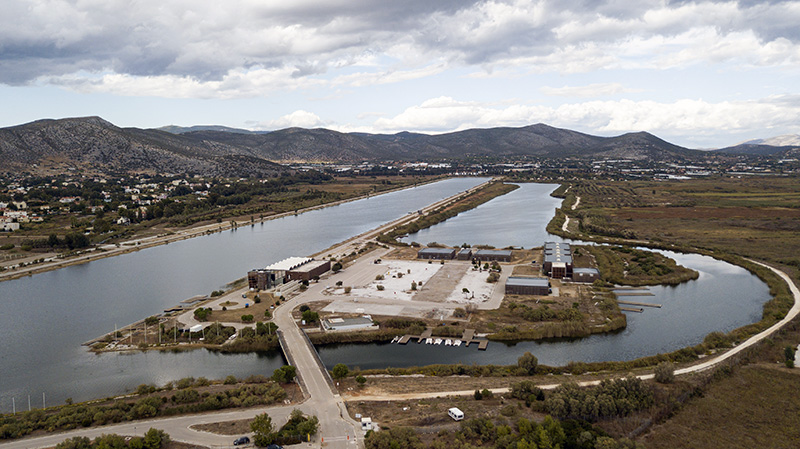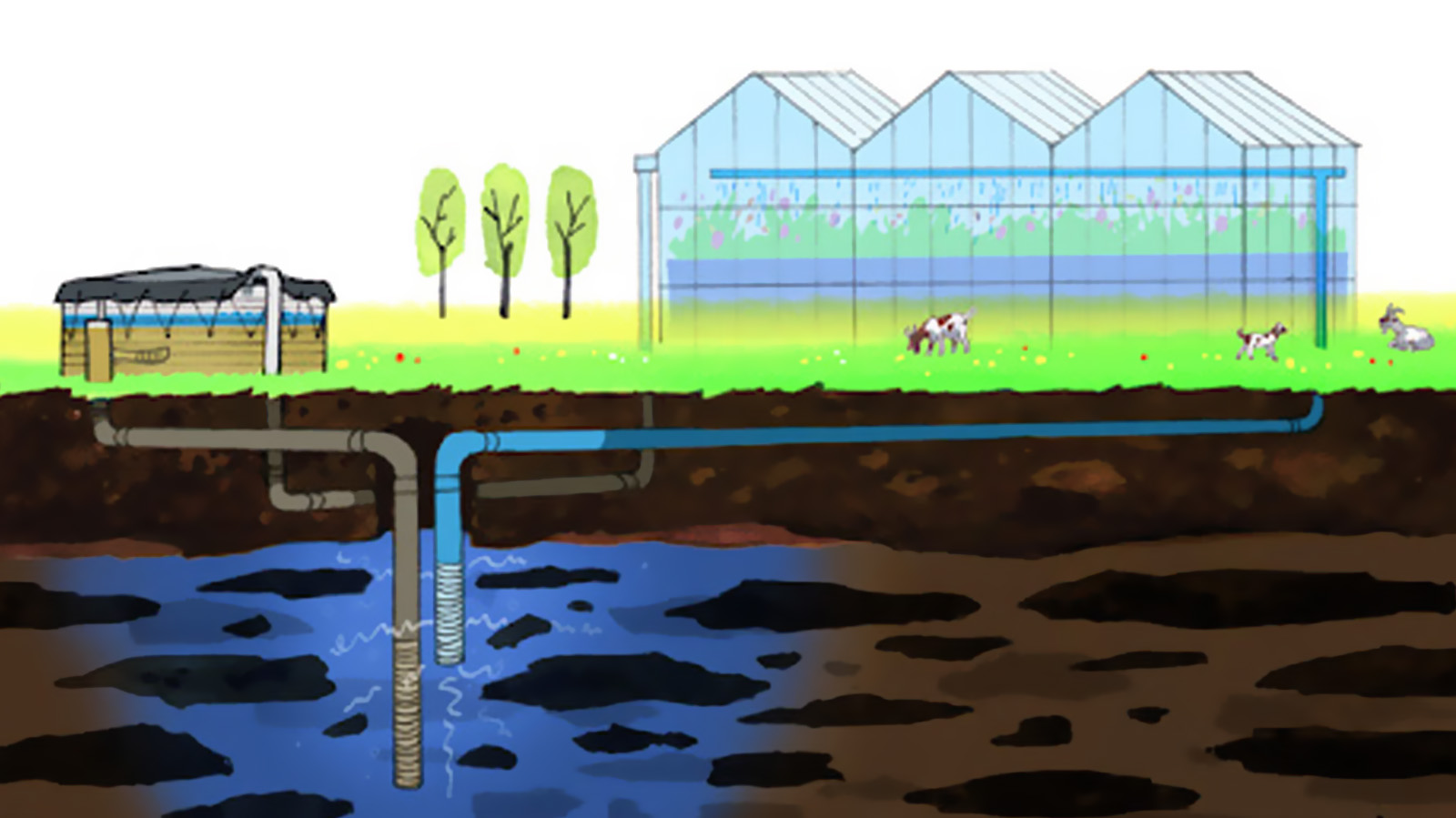DURATION: 01.09.2015 to 31.08.2018
BUDGET: 275,281.00€/ 4,170,008.38
FUNDING: H2020 WATER First application and market replication, Innovation Action.
ABOUT SUBSOL
SUBSOL: BRINGING COASTAL SUBSURFACE WATER SOLUTIONS TO THE MARKET, was a three year H2020 Innovation Action project funded by WATER First application and market replication topic. SUBSOL targeted a market breakthrough of SWS as robust answers to freshwater resources challenges in coastal areas, by demonstration, market replication, standardization and commercialisation.
The route to market included business cases, market scans and capacity building in selected regions in Europe (Mediterranean, North-western Europe) and worldwide (USA, Brazil, China, Vietnam). Coastal areas are the most productive and economically dominant regions of the world. The high-water demand in these regions, however, puts tremendous pressure on their freshwater resources and ecosystems. This leads to problems like seasonal water shortage, saltwater intrusion, and disappearance of wetlands.
Building on national, regional, and European research and innovation programs, in the past five years, a set of innovative, practical concepts have been developed for protection, enlargement and utilization of freshwater resources in coastal areas. These subsurface water solutions (SWS) combine innovations in water well design and configuration, allowing for advanced groundwater management, and maximum control over freshwater resources. SWS have been successfully piloted by public-private partnerships. These full-scale pilots have demonstrated SWS capacity to support sustainable freshwater supply in coastal areas, energy reduction, food production, and financial savings.

SUBSOL shared experiences and outcomes with stakeholder groups through an online platform, that was linked to existing networks, including EIP on Water. The SUBSOL consortium combined knowledge providers, technology SMEs, consultants, and end-users from across Europe. Our ambition was to introduce a new way of thinking in terms of water resources management, promoting the sustainable development of coastal areas worldwide. This aimed to stimulation of economic growth and creation of market opportunities and jobs for the European industry and SMEs.
Schinias replication site
The coastal site of the Schinias Natural Park is situated in the plain of Marathon, a typical Mediterranean environment that hosts important naturally occurring ecosystems (coastal wetlands, sand dunes and a pine forest), but also accommodates greenhouses, requiring high quality water. The multi-layer aquifer system consists of an upper unconsolidated formation of (mostly) fluvial sediments, surrounded and underlain by karstic marbles. Saltwater intrusion is a major issue in the upper aquifer housing the wetland/forest and agricultural activities, while the lower karstic aquifer has significant water flow that discharges directly to the sea.

SWS are a novel approach combining management and technology to protect, enlarge and utilize fresh groundwater resources. It is distinguished by new well designs and configurations as well as new management features to precisely control the fresh groundwater resources. SWS are adaptable to changing environmental and socio-economic conditions.
Within SUBSOL, new field testing sites are established to test and demonstrate the benefits of SWS. Schinias, as one of these locations, will show how the freshwater from the lower groundwater layer can be used to prevent saltwater intrusion. In this way, the SWS will help to protect and enhance the local ecosystem while improved access to water supply will enable users, e.g. farmers and the tourism sector, to increase their income.
The SWS system used in Schinias is called Managed Aquifer Recharge (MAR), which withdraws brackish groundwater from the lower aquifer. Subsequently, the abstracted water is treated as well as desalinated in on-site facilities by means of membrane filtration (Reverse Osmosis) and chemical treatment (Advanced Oxidation Processes) before being introduced both to the upper aquifer and the wetland. Thus, the upper aquifer is better protected from saltwater intrusion while the wetland’s ecological capacity is restored. The entire system, including the water quality and groundwater level and the performance of the treatment processes, is operated and monitored remotely through novel information and communication technology (ICT).
The aim of the Schinias replication was to test SWS configurations that make use of water from karstic aquifers, adequately treated through novel pollution remediation techniques for the pumped water, including Reverse Osmosis (RO) coupled with Advanced Oxidation Methods (Ozonation/alternative AOPs), in order to ensure the recharge of the upper aquifer with high quality water. Both treatment techniques and recharge operations were remotely monitored and operated, so as to be applicable in similar remote locations. Key elements of the Schinias replication were: demonstration of how a currently unused water source (potentially polluted groundwater and surface water) can be turned into a source for protection; regeneration and financial sustainability for the area (and other similar ones throughout the Mediterranean).
This aimed to show the strength of the integrative approach of SWS, solving multiple water resources issues. Schinias will be the second SWS application in fractured hardrock, after the Falster replication.
OUR ROLE IN THE PROJECT
In SUBSOL, our role was to develop and demonstrate innovative and practical concepts for protection, enlargement and utilization of freshwater resources in coastal areas.
In particular, in the Schinias pilot (Attica), we have designed and implemented an SWS hybrid system of ASR-Coastal and Freshmaker technologies, coupled with novel pollution remediation techniques including Reverse Osmosis (RO) and Advanced Oxidation Methods (AOPs) to make use of water from karstic coastal aquifers and address saltwater intrusion.
The Schinias case demonstrated how this, currently unused resource, can be turned into a source for protection, regeneration and financial sustainability for the area as well as other similar ones throughout the Mediterranean.
Additionally, a series of stakeholder meetings, the participatory Technological Assessments (pTAs), have been successfully performed in order to enhance the local community engagement and to ensure acceptability of the technology as well as to broaden the market reach and uptake.
Finally, we have developed a flexible, extendable, web-based SWS Knowledge Environment (KE) to search for and share information about innovative, practical concepts for advanced freshwater management: subsurface water solutions. This KE consists of three parts: a Knowledge Base, a Toolkit, and a Marketplace, all provided through a unified web-based environment.
See project’s video and video on stakeholders’ workshops and Patriciaptory Technological Assessments (PTAs) in replication sites


